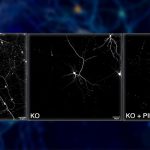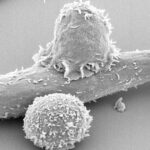Itch is a socially contagious sensation that is familiar to all – but which nerve cells are involved in conveying itch from the skin to the brain? A group of Pitt School of Medicine neuroscientists used powerful microscopes to visualize groups of spinal cord neurons that are activated by itch-causing substances and were first to identify specific neuron types as targets of drugs that suppress chronic itch.

Dr. Tayler Sheahan
“So much of our day-to-day life is influenced by our surroundings,” said lead author Dr. Tayler Sheahan, postdoctoral fellow in Dr. Sarah Ross’s neurobiology lab at Pitt. “Broadly speaking, this research gives us insight into how our nervous system interacts with the environment in a way that gives rise to unique sensations that influence our behavior – like an itch driving us to scratch.”
A class of drugs that block pain and stress receptors called ‘kappa opioid receptors’ and relieve severe itch have long been used in Japan – though, until now, their mechanism of action stayed mysterious.
By visualizing the activity of spinal cord neurons in response to combinations of different types of itch-causing agents and kappa opioid receptor blockers, Sheahan made a surprising discovery. While kappa opioid receptor blockers could influence the activity of many itch neurons within the spinal cord, those blockers acted exclusively on a population of cells that carry itch input to the brain.
The discovery of an interconnected group of neurons that are involved in encoding itch within the spinal cord brings scientists one step closer to understanding how the spinal cord processes a wide range of sensory information from the world around us.

Dr. Sarah Ross
“Our results set the stage for finding a way to distinguish between neurons that encode itch from those that encode pain,” said Sheahan, who recently accepted a position as an assistant professor of cell biology, neurobiology, and anatomy at the Medical College of Wisconsin.
“Now that we have the tools to observe the activity of hundreds of neurons simultaneously, we will be able to evaluate some of the current theories of how the spinal cord processes sensory information and likely come up with new insights that could lead to more effective nonopioid treatments for chronic pain,” said senior author Dr. Sarah Ross, professor of neurobiology at Pitt.









